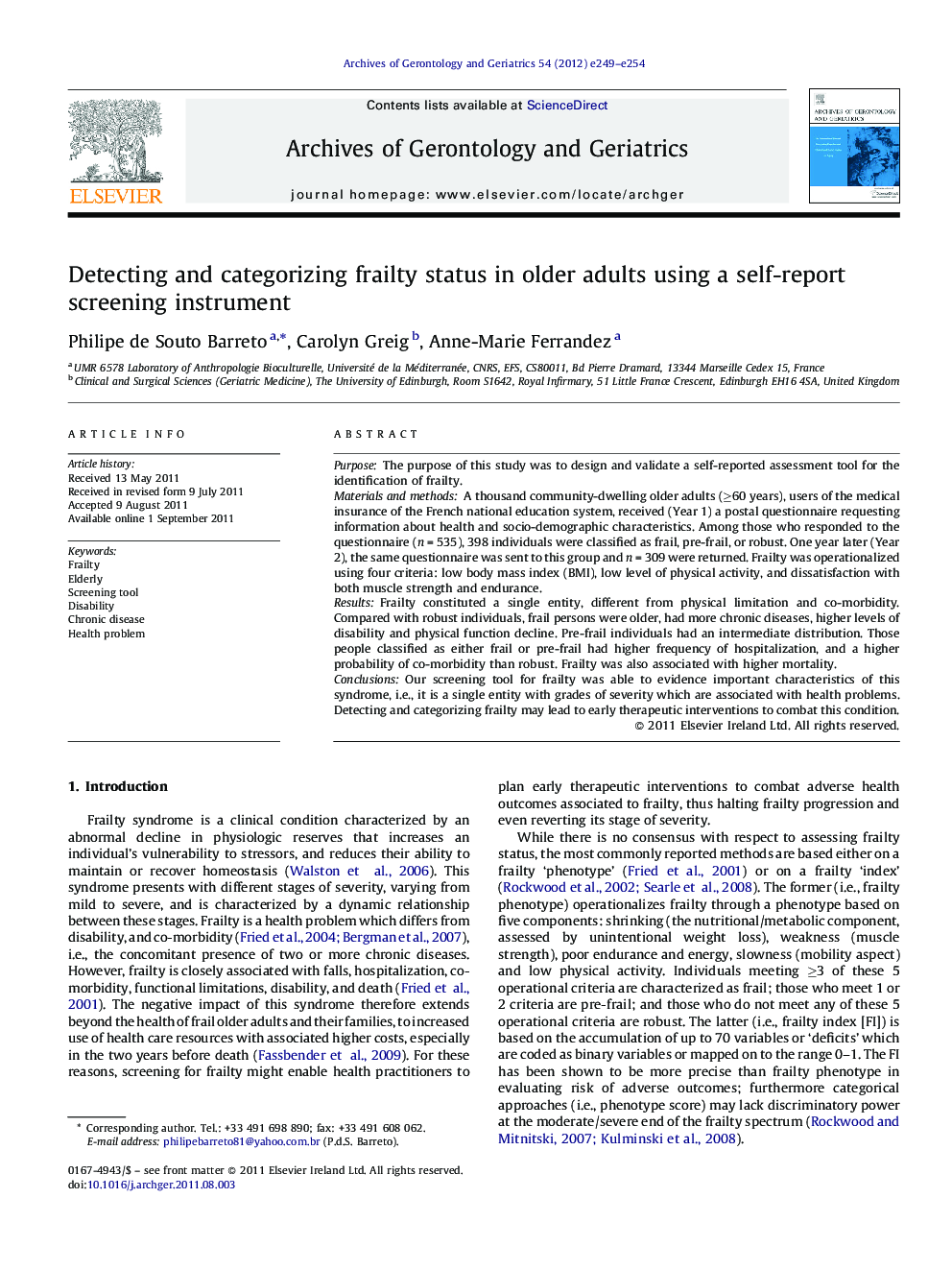| Article ID | Journal | Published Year | Pages | File Type |
|---|---|---|---|---|
| 1903249 | Archives of Gerontology and Geriatrics | 2012 | 6 Pages |
PurposeThe purpose of this study was to design and validate a self-reported assessment tool for the identification of frailty.Materials and methodsA thousand community-dwelling older adults (≥60 years), users of the medical insurance of the French national education system, received (Year 1) a postal questionnaire requesting information about health and socio-demographic characteristics. Among those who responded to the questionnaire (n = 535), 398 individuals were classified as frail, pre-frail, or robust. One year later (Year 2), the same questionnaire was sent to this group and n = 309 were returned. Frailty was operationalized using four criteria: low body mass index (BMI), low level of physical activity, and dissatisfaction with both muscle strength and endurance.ResultsFrailty constituted a single entity, different from physical limitation and co-morbidity. Compared with robust individuals, frail persons were older, had more chronic diseases, higher levels of disability and physical function decline. Pre-frail individuals had an intermediate distribution. Those people classified as either frail or pre-frail had higher frequency of hospitalization, and a higher probability of co-morbidity than robust. Frailty was also associated with higher mortality.ConclusionsOur screening tool for frailty was able to evidence important characteristics of this syndrome, i.e., it is a single entity with grades of severity which are associated with health problems. Detecting and categorizing frailty may lead to early therapeutic interventions to combat this condition.
